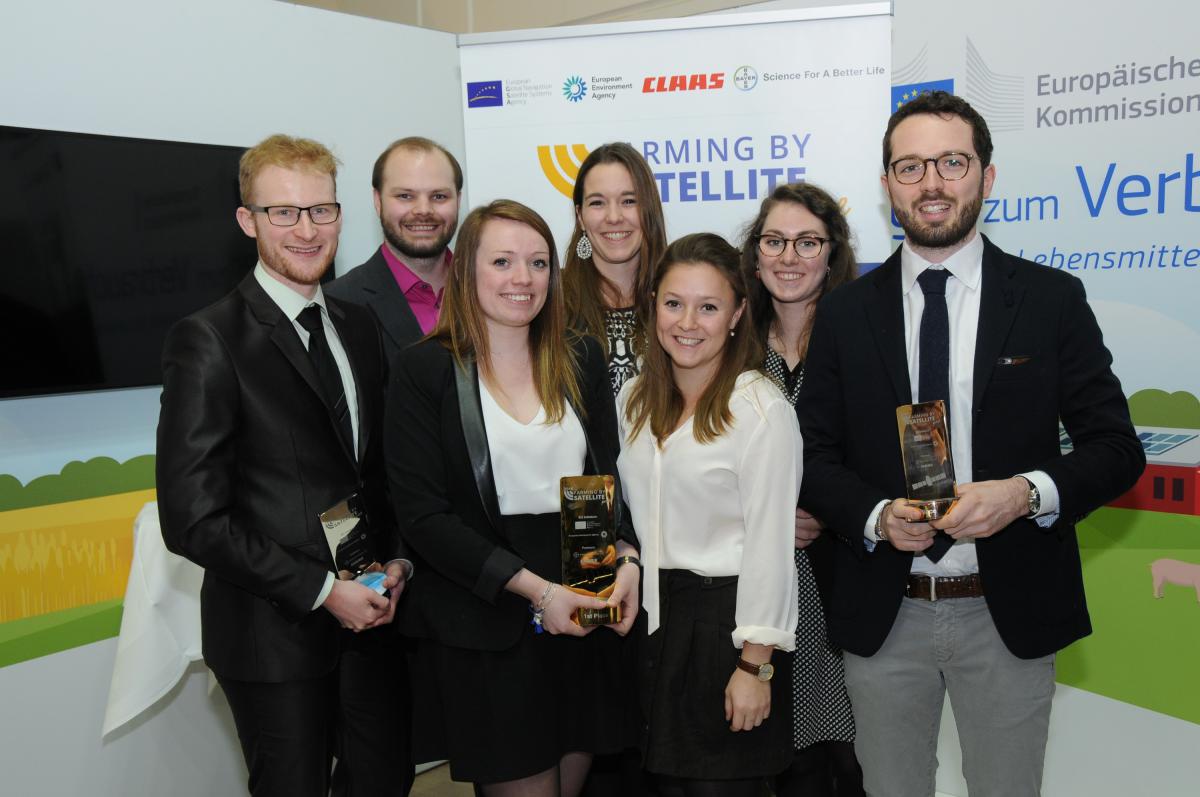With cash prizes totalling EUR 13 000 and a wider geographical scope for entries, the second edition of the Farming by Satellite Competition is now open for submissions. The aim of the competition is to promote the use of satellite technologies in agriculture and their benefits to end users. The competition, an initiative of the European GNSS Agency (GSA), is supported by agricultural machinery manufacturers CLAAS and crop science experts Bayer.
 The EUR 13 000 ‘Farming by Satellite Prize’ is open to European students and young farmers with innovative ideas for using satellite technology to improve agricultural production, efficiency and profit, or to reduce the environmental impact of the sector. First launched in 2012, the 2013 edition was expanded to include a special prize for submissions that address the needs of farmers and growers in Africa. To compete, individuals or teams submit case studies, new ideas or innovations that rely on the current EGNOS(regional positioning) and forthcoming GALILEO (global positioning) and Copernicus (Earth observation) systems.
The EUR 13 000 ‘Farming by Satellite Prize’ is open to European students and young farmers with innovative ideas for using satellite technology to improve agricultural production, efficiency and profit, or to reduce the environmental impact of the sector. First launched in 2012, the 2013 edition was expanded to include a special prize for submissions that address the needs of farmers and growers in Africa. To compete, individuals or teams submit case studies, new ideas or innovations that rely on the current EGNOS(regional positioning) and forthcoming GALILEO (global positioning) and Copernicus (Earth observation) systems.
Gian-Gherardo Calini, Head of Market Development at the GSA said: “We want to build on the success of last year’s prize and encourage even more entries. Over 100 registrations were received from 25 countries, and this year with Africa included, we expect that to grow again. We are looking for imaginative solutions that employ ‘free’ satellite technology that can help all the world’s farmers. We anticipate entries from commercial teams as well as students of agriculture, horticulture and life sciences.”
An amazing experience
The winner of the inaugural ‘Farming by Satellite Prize’ was Robert Fillingham, a PhD student from Harper Adams University in the UK. His winning idea was to develop a geo-referenced online data platform capable of providing information services for farmers across Europe. His ‘European Farm Management Information System’ involves comprehensive data collection that will have a substantial impact on best agricultural practises.
“Entering the competition provides a great chance to have your innovative ideas heard by leading industry experts and potentially taken on for further development,” said Fillingham. “Winning the Farming by Satellite Prize was an amazing experience that has opened the door to many opportunities – so don't hesitate and get writing your submission!”
How to apply
Those interested in participating in the 2014 prize competition must register before 10 February 2014, with entries due 14 April 2014.
Entries may take a variety of forms, including:
- Success stories on the application of GNSS and precision agriculture
- Related ideas and innovations in different countries and farm types
- Technical proposals for equipment or systems applied to different crops or farm types
- Specific applications for small farms, cooperative groups or wider area application of GNSS or other satellite technologies.
Entries must be submitted in electronic format and in English. All entries must include a short abstract and a full description of the idea, along with additional materials such as a short video, presentation or relevant computer model.
The competition is open to all students and young people below the age of 32 studying or a resident in 40 European countries. For full details of the competition, see the dedicated Farming by Satellite website.
About satellite farming
EGNOS provides a free-to-air higher accuracy augmentation to standard GPS and the new GALILEO satellite service and is essentially Europe's ‘pre-GALILEO' system and its first concrete venture into satellite navigation. EGNOS delivers services based on GPS and GLONASS signals, augmenting them to increase their accuracy. This enables metre-to-metre precision and path-to-path accuracy of 15-13cm, opening the way to precision agriculture.
Precision agriculture is a highly effective farming strategy that allows farmers to better allocate inputs, such as seeds and fertilisers, to increase productivity, lower costs and minimise environmental impact. Traditionally, the main obstacle to wide scale application of precision agriculture has been the substantial investment required. EGNOS and in the future GALILEO fundamentally change the equation by offering high precision at a low cost.
The main advantages of satellite technologies in agriculture include high accuracy and the repeatability of the same action year-on-year. These two fundamental advantages lead to valuable benefits such as:
- Reduced waste through over-application of fertilisers and herbicides
- Reduced seed consumption
- Fuel and time savings
- Lower fatigue
- Extended equipment life
- Optimisation of crop yields.
Media note: This feature can be republished without charge provided the European GNSS Agency (GSA) is acknowledged as the source at the top or the bottom of the story. You must request permission before you use any of the photographs on the site. If you do republish, we would be grateful if you could link back to the GSA website (http://www.gsa.europa.eu).
More information:
EGNOS Portal
Galileo
Farming by Satellite website